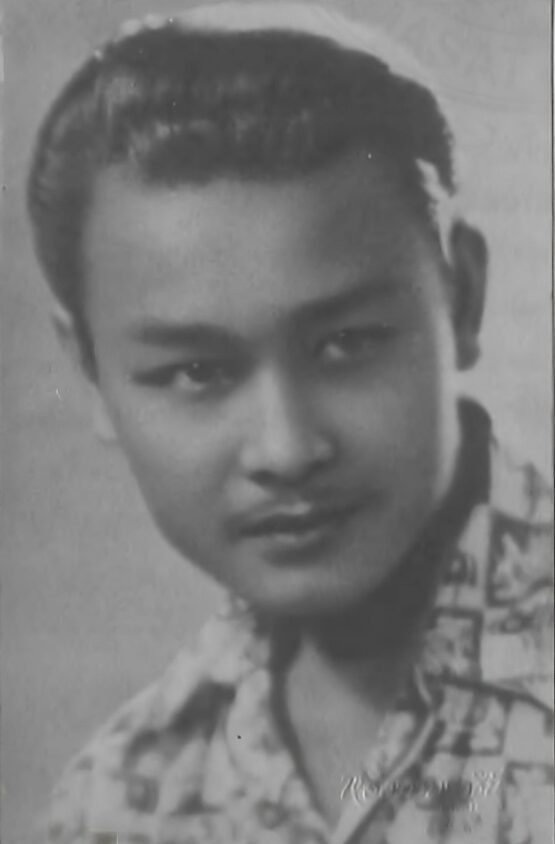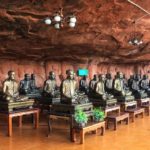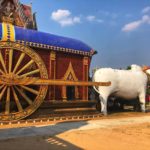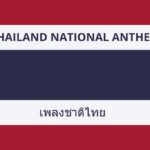
Thai Journalist Day – Remembering Rong Wongsawan

In Thailand, “Journalist Day” (วันนักข่าว) occurs every year on March 5th. Formally known as “National Mass Communication Day” (วันสื่อสารมวลชนแห่งชาติ), this day for honoring Thai journalists coincides with the establishment of the Journalists Association of Thailand on March 5th, 1955.
Fifteen pioneering Thai journalists joined together to form the journalists association, including Choti Maneenoi (โชติ มณีน้อย) who was their first president. The holiday for Thai journalists was formally established in 1967, with 16 Thai newspapers signing on to celebrate Journalists Day in Thailand.
In the beginning years, no Thai newspapers were sold on March 6th (because all journalists were given holidays the day before). However, newspapers began to secretly be published on this day due to public demand, and eventually the tradition of a news blackout was abandoned.
Today, “National Mass Communication Day” is a regular work day for Thai journalists (and not a holiday as in the past). However, commemoration activities are held, which are organized by the Thai Journalists Association (TJA) — an organization which protects the rights and freedoms of media workers, while also unifying and strengthening the free press in Thailand.
Member of the news industry (including all media channels) get together on Thai Journalist Day for an annual event that recognizes outstanding journalism, hands out awards, and discusses strategies for further strengthening journalism in Thailand.

Remembering Rong Wongsawan
To celebrate Journalist Day, we would like to remember a Thai journalist and writer you likely have never heard of but whose work is worthy of recognition:
Rong Wongsawan (ณรงค์ วงษ์สวรรค์) was a Thai writer and journalist who transformed Thailand’s literary landscape by skillfully addressing societal issues through metaphorical language and inventive dialogue, despite constraints on free expression.
Born in Chai Nat province in 1932, Rong showed early literary promise but was expelled from school, leading to various jobs before being mentored by M. R. Kukrit Pramoj, the great grandson of King Rama II who founded the Siam Rath newspaper. In 1956, he produced an impactful photo-essay, “Children of Garbage Mountain,” which shed light on Bangkok’s poverty and spurred government action.
He was sent by Siam Rath to the United States during the mid-1960s as their correspondent. His experiences in California influenced his writing, aligning him with the counterculture movement. During the 1960s, amid military rule and social change in Thailand, he penned groundbreaking novels like “Sanim Soi,” addressing prostitution and sexual health issues.
Khun Rong (short for Narong) is sometimes referred to as Thailand’s first “Gonzo” journalist, because like Hunter S. Thompson he would often inject himself into his work, and throw off the pretense of objectivity.
Despite avoiding direct political involvement, he risked his safety by criticizing and satirizing Thailand’s military rulers through his columns, and by ridiculing the hypocrisies of elite Thai society.
Rong Wongsawan was not only known for his writing but also for his roles in Thai films and TV. His mountain retreat near Chiang Mai became a hub for artists and aspiring writers.
Throughout his long life, he remained devoted to his manual typewriter, creating over 100 books and thousands of articles. His crowning achievement was being recognized in 1995 as a National Artist of Thailand (ศิลปินแห่งชาติ) — a title given annually to notable Thai artists who have made remarkable contributions to Thailand’s cultural heritage via literature, fine arts, visual arts, applied arts, or performing arts. He passed away in 2009 at the age of 76.
Khun Narong’s legacy lies in his ability to tackle sensitive topics with insight, honesty, and humor, cementing his place as a literary icon in Thailand.
- The Royal Ploughing Ceremony in Thailand – A History - May 8, 2024
- Dying Well the Buddhist Way in Thailand - May 7, 2024
- Comforting Words for the Brokenhearted in Thailand - May 6, 2024




